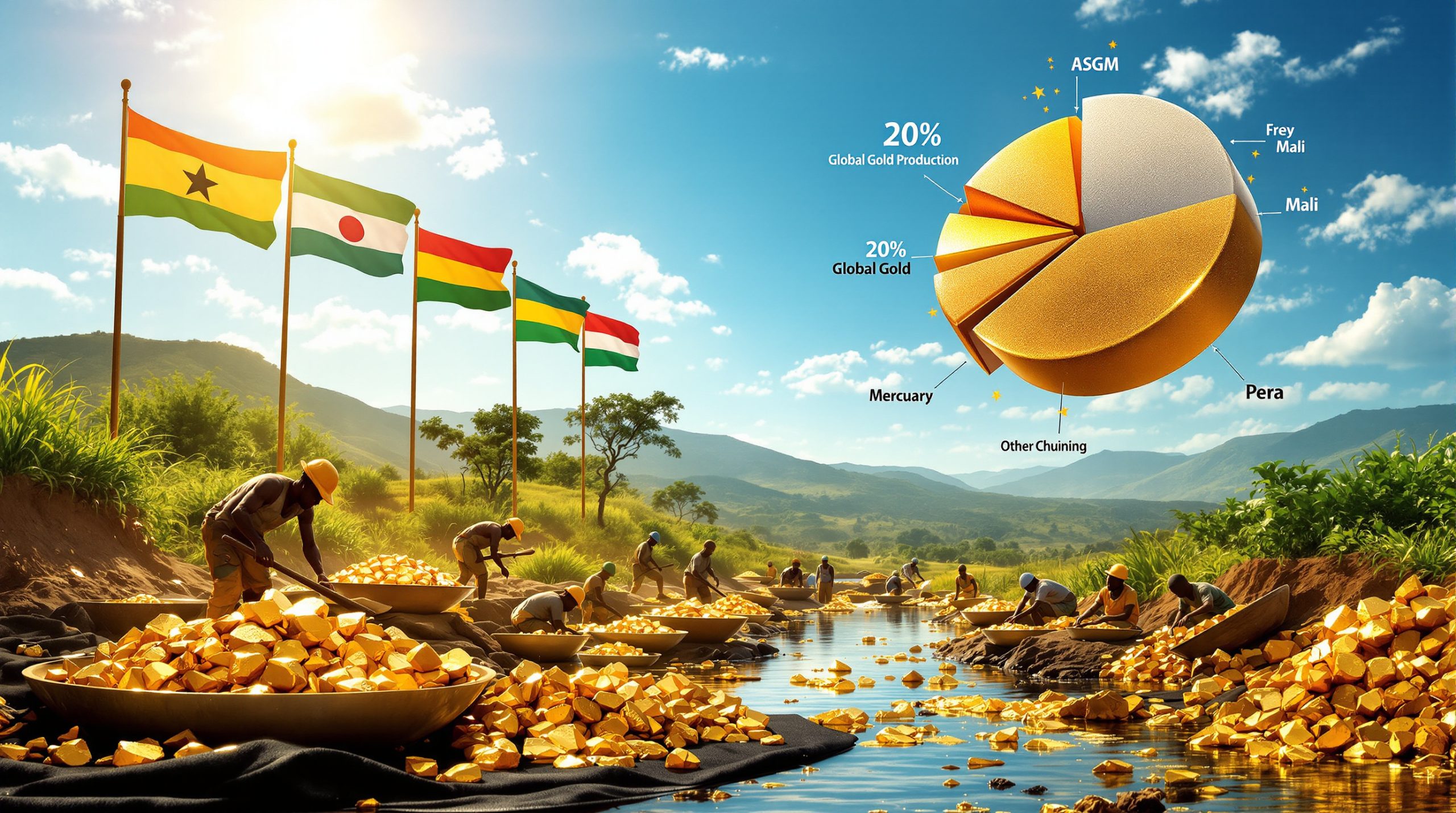Understanding Guinea's Geological Marvel
The Simandou iron ore project represents one of the most significant mineral discoveries in modern mining history, containing an estimated 4 billion tonnes of high-grade iron ore across a vast mountain range in southeastern Guinea. This geological treasure trove averages 65% iron content, substantially exceeding the global standard of 58-62% that characterizes most commercial iron ore deposits worldwide.
Located in Guinea's Nzérékoré region, the deposit spans approximately 110 kilometers and has attracted unprecedented international investment due to its exceptional quality characteristics. The high iron concentration translates directly into enhanced steel production efficiency, reduced energy consumption during processing, and lower carbon emissions per tonne of steel produced.
Furthermore, understanding current iron ore price trends becomes crucial when evaluating Simandou's market entry strategy. The superior grade of Simandou ore offers Chinese steelmakers a critical advantage as they navigate margin pressures whilst seeking to reduce their environmental footprint through more efficient raw material inputs.
Project Scale and Global Supply Transformation
When Simandou iron ore project reaches full operational capacity, it will produce 120 million tonnes annually, fundamentally altering global iron ore supply dynamics. This production volume represents an 8-9% increase in worldwide seaborne iron ore supply, according to commodity analysts who have studied the project's market implications.
The project's two operational blocks will contribute equally to this massive output. However, recent iron ore demand insights suggest that global consumption patterns are evolving rapidly.
• SimFer consortium: 60 million tonnes annually from Blocks 3 & 4
• WCS consortium: 60 million tonnes annually from Blocks 1 & 2
• Combined capacity: Positions Simandou among the world's largest iron ore operations
• Market timing: Production ramp-up expected to reach full capacity by 2028
Guinea's economy stands to benefit enormously from this development, with the International Monetary Fund projecting a 26% GDP boost by 2030 as mining operations mature and supporting industries develop around the project infrastructure.
Consortium Ownership and Operational Structure
The Simandou iron ore project operates through a carefully structured partnership model that divides the deposit's four mining blocks between two major consortiums, each bringing distinct capabilities and market connections to the venture.
SimFer Consortium Leadership in Blocks 3 & 4
Rio Tinto leads the SimFer consortium alongside Chinese state-owned Chalco Iron Ore Holdings, combining Anglo-Australian mining expertise with Chinese market access and financing capabilities. Consequently, this partnership has demonstrated remarkable progress, with the consortium successfully stockpiling 2 million metric tonnes of ore by October 2025, exceeding their earlier reported target of 1.5 million tonnes.
Moreover, the consortium's operational achievements include several key milestones. The Simandou iron ore project represents a cornerstone development in Rio Tinto's expansion strategy:
• First rail transport: Completed ore loading in October 2025
• Stockpiling progress: Accumulated sufficient inventory for inaugural commercial shipments
• Infrastructure coordination: Established logistics partnerships for initial export routes
Winning Consortium Simandou Operations in Blocks 1 & 2
The Singaporean-Chinese consortium known as WCS brings complementary strengths through its diverse partnership structure. Winning International Group provides strategic coordination and financing, whilst Weiqiao Aluminium contributes industrial integration advantages that connect iron ore production with downstream aluminum and steel manufacturing capabilities.
In addition, WCS achieved a significant milestone by commencing stockpiling operations in September 2025, creating competitive pressure and establishing what industry observers describe as a race for early market share between the two consortiums.
Table: Simandou Ownership and Production Status
| Mining Blocks | Consortium | Lead Partners | Operational Milestone |
|---|---|---|---|
| Blocks 3 & 4 | SimFer | Rio Tinto, Chalco | 2M tonnes stockpiled Oct 2025 |
| Blocks 1 & 2 | WCS | Winning International, Weiqiao | Stockpiling began Sept 2025 |
| Combined | Both | International partnerships | First shipments Nov 2025 |
Transportation Infrastructure and Export Capabilities
The Simandou iron ore project required massive infrastructure investment to connect Guinea's interior mining regions with global markets, fundamentally transforming the country's transportation capabilities and export potential.
Railway Network and Logistics Integration
A 600-kilometer railway system forms the backbone of Simandou's export infrastructure, stretching from the mountain mining sites to Guinea's Atlantic coastline. This transportation network represents one of Africa's most significant recent railway developments, designed specifically to handle the massive tonnage requirements of industrial-scale iron ore production.
Furthermore, modern rail logistics improvements in mining operations worldwide demonstrate the importance of efficient transportation systems. The railway system features:
-
High-capacity ore cars designed for 65% grade iron ore transport
-
Automated loading systems at mine sites for efficient ore handling
-
Strategic routing that minimises environmental impact whilst maximising transport efficiency
-
Integration capabilities with existing West African transport corridors
Deep-Water Port Development and Shipping Access
WCS consortium has developed sophisticated port facilities nearing completion as of October 2025, positioned to handle the massive vessel loading requirements that Simandou's production volumes demand. However, Rio Tinto's SimFer consortium will initially utilise these WCS-owned port facilities, demonstrating the collaborative infrastructure approach that makes the project viable.
The port complex offers several advantages:
• Deep-water berths capable of accommodating large bulk carriers
• Advanced loading systems designed for high-grade ore handling
• Strategic Atlantic positioning for efficient shipping routes to Asian markets
• Expandable capacity to accommodate full production ramp-up through 2028
Initial shipments are expected to head directly to China, which consumes over 70% of seaborne iron ore globally and represents the primary market for Simandou's premium-grade output.
Market Impact and Pricing Dynamics Revolution
The Simandou iron ore project emergence into global markets carries profound implications for pricing structures, competitive dynamics, and the geographic distribution of iron ore supply that has dominated international trade for decades.
Premium Quality Positioning and Steel Industry Benefits
Simandou's 65% iron content provides substantial advantages over conventional iron ore grades, particularly for Chinese steelmakers facing mounting pressure to improve operational efficiency and reduce emissions. The superior ore quality enables:
• Reduced energy consumption during steel production processes
• Lower carbon emissions per tonne of finished steel
• Enhanced furnace efficiency through higher iron concentration
• Improved profit margins despite premium pricing for quality ore
Chinese steelmakers experiencing margin pressures from a prolonged property sector downturn are actively seeking lower-cost, high-grade ore alternatives to optimise their operational efficiency whilst meeting environmental compliance requirements.
Competitive Pressure on Established Mining Regions
Industry analysis suggests that Simandou's market entry will create significant challenges for higher-cost iron ore producers worldwide. Peter Cunningham, Rio Tinto's Finance Chief, indicated in July 2025 that the project's launch would likely force some higher-cost suppliers out of the market entirely.
Tom Price from Panmure Liberum warns that iron ore prices could face sustained downward pressure if Australian and Brazilian miners fail to respond strategically to Simandou's production ramp-up. The 120 million tonnes annual output target by 2028 represents a fundamental shift in global supply availability.
Market analysts project that marginal producers operating at higher extraction costs may struggle to maintain profitability as Simandou's premium-grade ore captures increasing market share through quality differentiation rather than price competition alone.
However, the broader context of global trade impacts suggests that geopolitical factors will significantly influence commodity markets. Impact Assessment on Global Producers:
• Australian Pilbara operations: Face competitive pressure from African supply routes
• Brazilian Vale operations: Must respond to quality premium competition
• Higher-cost mines globally: Risk market displacement without operational improvements
• Shipping routes: New Atlantic-to-Asia corridors challenge traditional Pacific dominance
Development Timeline and Operational Milestones
The Simandou iron ore project has navigated complex development challenges spanning over a decade, with recent accelerated progress demonstrating the partnerships' commitment to bringing this world-class deposit to market.
Recent Operational Achievements and Commercial Launch
October 2025 marked a crucial milestone when Rio Tinto successfully loaded the first ore onto rail transport, transitioning from stockpiling to active logistics operations. This achievement followed months of intensive infrastructure testing and operational preparation across both consortium operations.
November 2025 represents the project's commercial launch, with several key events planned:
-
November 11, 2025: Guinea's military government plans formal project commissioning
-
Mid-November 2025: First commercial vessel loading expected
-
Inaugural shipment: Destined for Chinese steel markets
-
WCS parallel operations: September 2025 stockpiling commencement creating competitive momentum
Production Ramp-Up Strategy Through 2028
The consortium approach enables Simandou iron ore project to pursue aggressive scaling timelines whilst managing operational risks through diversified expertise and financing. Furthermore, both SimFer and WCS operations are targeting coordinated expansion that will achieve:
• 2025-2026: Initial production and market establishment phase
• 2026-2027: Gradual capacity increases and infrastructure optimisation
• 2028: Full 120 million tonnes annual capacity across both consortium operations
• Post-2028: Potential expansion opportunities based on market demand and reserve development
The parallel development strategy between the two consortiums creates natural competitive pressure that accelerates overall project progress whilst ensuring redundancy in critical infrastructure and operational capabilities.
China's Strategic Resource Security Integration
The Simandou iron ore project represents a cornerstone of China's broader resource security strategy, diversifying supply sources whilst securing access to premium-grade materials essential for the country's steel industry transformation.
Chinese Investment Architecture and Market Access
China's engagement with Simandou demonstrates sophisticated strategic planning through multiple partnership channels. State-owned Chalco participates directly in the SimFer consortium alongside Rio Tinto, whilst the Singaporean-Chinese WCS consortium provides alternative pathways for Chinese market integration.
This dual-channel approach offers several strategic advantages:
• Risk diversification across multiple partnerships and operational models
• Technology transfer from international mining expertise to Chinese operations
• Supply security independent of traditional Australian and Brazilian sources
• Quality premium access to 65% grade ore for advanced steel production requirements
Steel Industry Transformation and Quality Requirements
Chinese steelmakers face mounting pressure to improve efficiency and reduce environmental impact, making Simandou's high-grade ore particularly valuable for operational optimisation. The country's prolonged property sector challenges have intensified focus on:
-
Energy consumption reduction through premium raw material utilisation
-
Emission compliance meeting increasingly stringent environmental standards
-
Cost optimisation offsetting margin pressures through improved operational efficiency
-
Product quality enhancement supporting export competitiveness in global steel markets
China's dominant position as consumer of over 70% of seaborne iron ore globally ensures that Simandou's 120 million tonnes annual capacity will find ready market absorption, particularly given the ore's superior quality characteristics that align with Chinese industry transformation requirements.
Consequently, the project's debut coincides with China's expanding resource sector influence in Guinea, where Chinese companies already lead bauxite exports, creating synergistic opportunities for integrated mineral extraction and processing operations.
Guinea's Economic Transformation Prospects
The Simandou iron ore project represents Guinea's most significant economic development opportunity, with transformative implications extending far beyond direct mining revenues to encompass broad-based economic modernisation and infrastructure development.
GDP Growth and Revenue Generation Impact
The International Monetary Fund projects that Simandou operations will deliver a remarkable 26% GDP boost by 2030, reflecting both direct mining contributions and extensive multiplier effects throughout Guinea's economy. This transformation encompasses:
Direct Economic Contributions:
• Mining revenues: Government royalties and tax collections from 120 million tonnes annual production
• Export earnings: Foreign currency generation from premium-grade ore sales
• Infrastructure utilisation: Revenue generation from railway and port facility usage
• Local procurement: Supply chain opportunities for Guinean businesses and service providers
Table: Economic Transformation Indicators
| Metric Category | Current Baseline | 2030 Projection | Transformation Scale |
|---|---|---|---|
| GDP Impact | Pre-mining economy | +26% increase | IMF economic forecast |
| Annual Production | Development phase | 120M tonnes | Full operational capacity |
| Employment Creation | Limited mining sector | Extensive job generation | Direct and indirect opportunities |
| Infrastructure Value | Basic transport network | Modern logistics system | Export-capable facilities |
Regional Development and Infrastructure Legacy
Beyond direct mining activities, the Simandou iron ore project creates permanent infrastructure assets that will support Guinea's economic development for decades. The 600-kilometer railway system and deep-water port facilities provide:
-
Enhanced connectivity between Guinea's interior regions and international markets
-
Alternative transport options for agricultural and manufacturing exports
-
Technology transfer through advanced logistics and mining operations
-
Skills development creating human capital for broader economic diversification
The project's infrastructure investments establish foundation capabilities that extend far beyond iron ore extraction, positioning Guinea as a regional logistics hub and enabling economic diversification opportunities that leverage improved transportation and port access for multiple industries.
Environmental Stewardship and Community Integration
Large-scale mining developments like the Simandou iron ore project require comprehensive environmental management and community engagement strategies to ensure sustainable operations that balance economic development with ecological protection and social responsibility.
Ecosystem Impact Management and Conservation Initiatives
The project's 110-kilometer mountain range location requires careful environmental stewardship to protect Guinea's biodiversity whilst enabling mining operations. Key environmental considerations include:
• Water resource protection ensuring local communities maintain access to clean water sources
• Habitat conservation minimising disruption to endemic species and migration patterns
• Soil management preventing erosion and maintaining agricultural productivity in surrounding areas
• Air quality monitoring controlling dust and emissions from mining and transportation activities
Community Impact Assessment and Social Integration
Mining operations in Guinea's southeastern region affect traditional communities whose livelihoods depend on agriculture, fishing, and local resource utilisation. Responsible development requires:
-
Compensation frameworks for communities affected by mining and infrastructure development
-
Resettlement planning ensuring displaced populations receive appropriate support and alternative opportunities
-
Cultural heritage protection respecting traditional land use patterns and spiritual sites
-
Economic opportunity creation providing employment and business development opportunities for local residents
Sustainable mining practices must balance the economic benefits of resource extraction with long-term environmental protection and community well-being to ensure that Guinea's mineral wealth contributes to broad-based development rather than creating social disruption.
International financing and development standards typically require comprehensive environmental and social impact assessments, ongoing monitoring programmes, and community benefit-sharing arrangements that ensure local populations participate in the economic benefits generated by large-scale mining operations.
Strategic Investment Implications and Market Evolution
The Simandou iron ore project launch creates new paradigms for iron ore investment strategies, supply chain management, and competitive positioning that will influence global mining sector dynamics for decades.
Market Entry Timing and Competitive Advantages
Simandou's mid-November 2025 commercial launch positions the project advantageously within current market conditions, offering several strategic benefits. Moreover, understanding the broader mining industry evolution provides context for Simandou's strategic positioning.
First-Mover Advantages in West African Iron Ore:
• Geographic diversification reducing dependence on Australia-Brazil supply dominance
• Quality premium positioning leveraging 65% iron content for market differentiation
• Infrastructure control through consortium-owned railway and port facilities
• Chinese market access via direct partnership structures and established relationships
The competitive race between SimFer and WCS consortiums creates natural pressure for operational excellence whilst ensuring redundancy in critical infrastructure and supply capabilities.
Technology Integration and Operational Innovation
Modern mining operations like Simandou incorporate advanced technologies that optimise efficiency, safety, and environmental performance:
-
Automated mining equipment reducing operational costs and improving safety outcomes
-
Digital supply chain management enabling real-time tracking and quality assurance
-
Advanced processing techniques maximising ore quality and minimising waste
-
Environmental monitoring systems ensuring compliance with international standards
Global Supply Chain Transformation Impact
The addition of 120 million tonnes annual capacity from Guinea fundamentally alters global iron ore supply chain dynamics, creating new opportunities and challenges for multiple stakeholders. Recent analysis from S&P Global Market Intelligence highlights the project's transformative potential across the industry.
Traditional Producers:
• Australian operations must respond to increased competition and alternative supply routes
• Brazilian mining companies face pressure to optimise costs and improve quality positioning
• Higher-cost global producers risk market displacement without strategic adaptation
Steel Industry Consumers:
• Chinese steelmakers gain access to premium-grade ore with improved logistics
• Global steel producers benefit from increased supply diversity and potential price moderation
• Manufacturing industries may experience improved steel input cost stability
Shipping and Logistics:
• New Atlantic-to-Asia routes challenge traditional Pacific shipping dominance
• Port infrastructure development creates alternative logistics hubs in West Africa
• Vessel deployment strategies must adapt to new supply source locations
Investment Strategy Considerations:
The Simandou iron ore project success demonstrates the viability of large-scale infrastructure investment in African mineral resources, potentially encouraging similar developments across the continent. However, investors must carefully evaluate political stability, regulatory frameworks, and community relations when considering comparable projects.
Disclaimer: This analysis is based on publicly available information and industry reports. Investment decisions should consider additional due diligence regarding political risks, regulatory changes, and market volatility that may affect mining operations and commodity prices. Economic projections and production targets represent current estimates that may change based on operational experience and market conditions.
Are You Tracking Major Mineral Discoveries That Could Reshape Global Markets?
Discovery Alert's proprietary Discovery IQ model instantly identifies significant ASX mineral discoveries like transformative projects such as Simandou, providing subscribers with immediate alerts on high-potential opportunities before broader market recognition develops. Explore how historic discoveries can generate substantial returns and begin your 30-day free trial today to position yourself ahead of emerging market opportunities.




